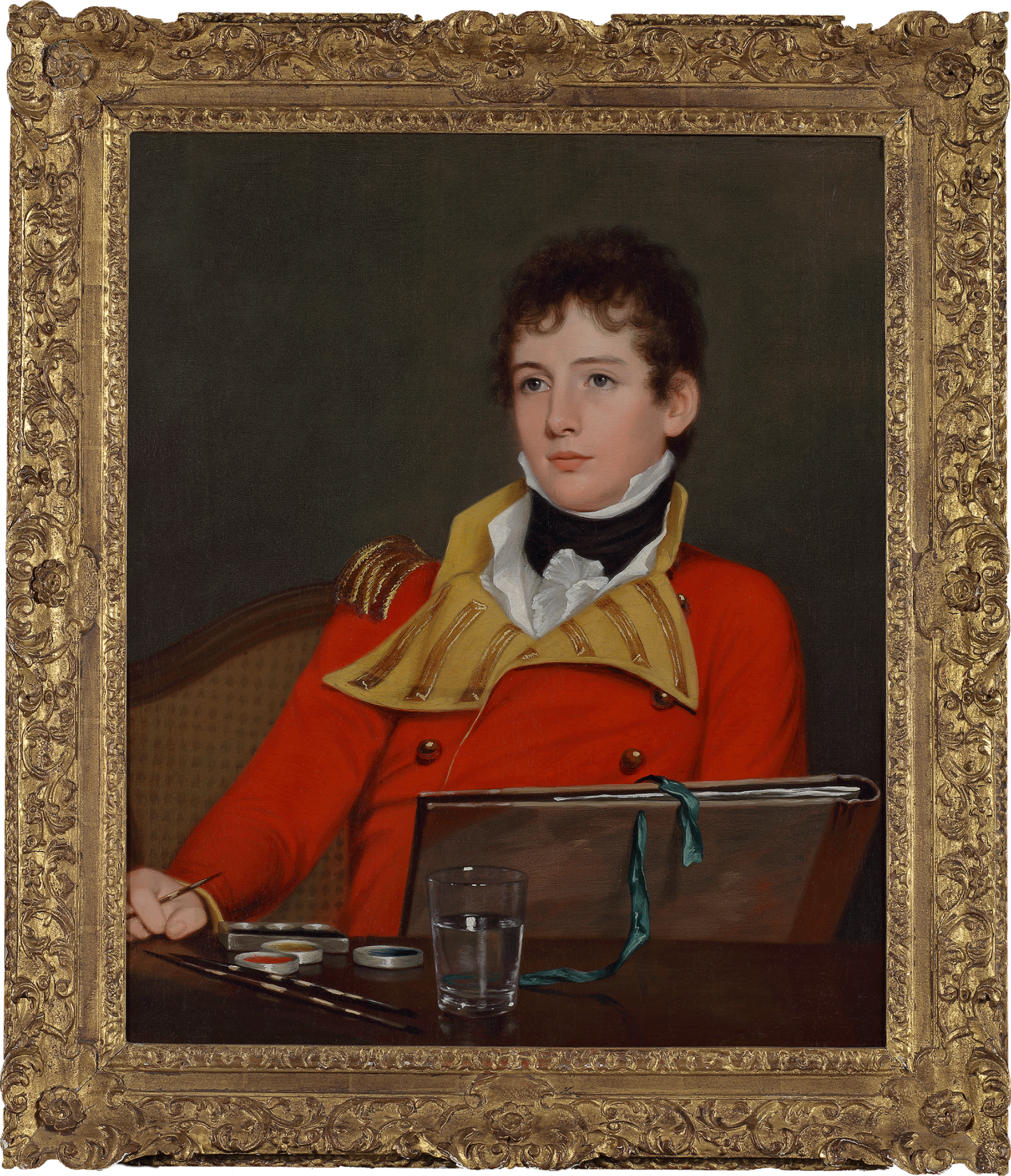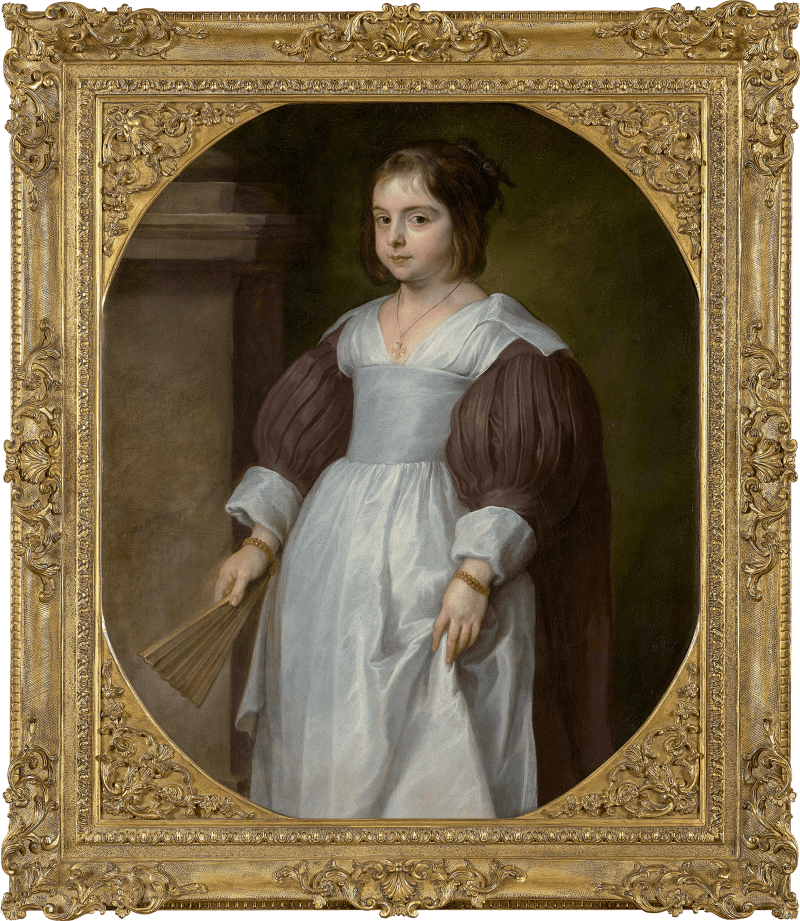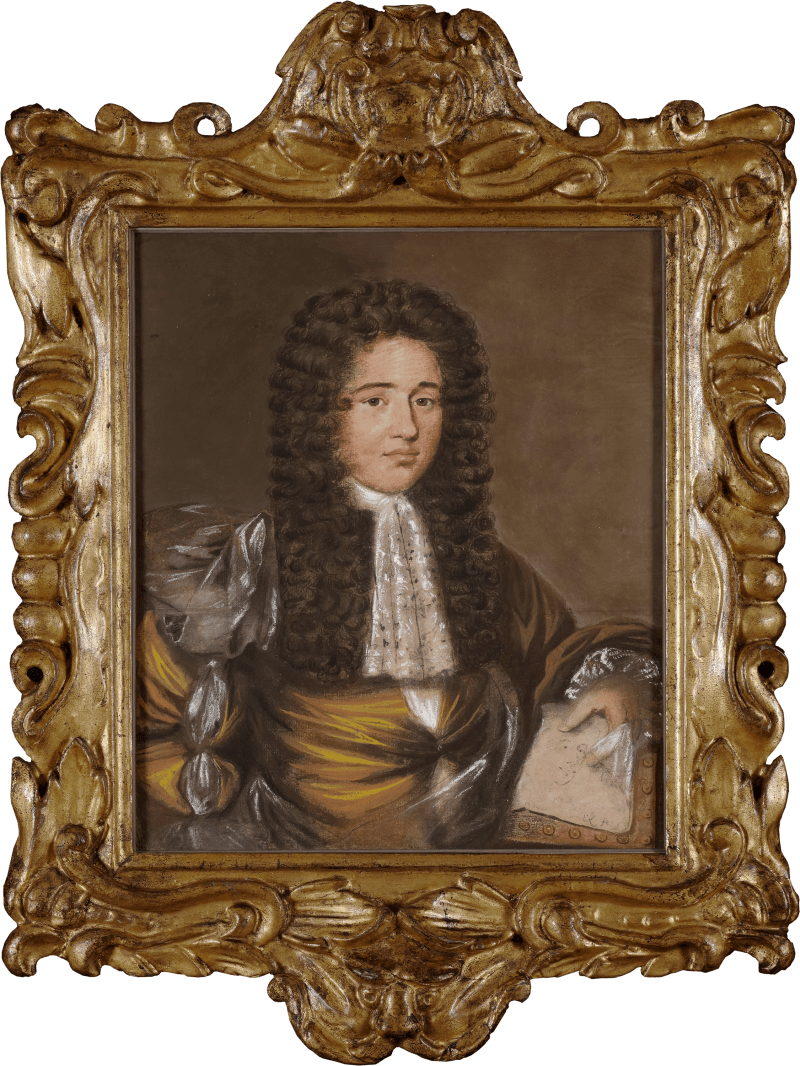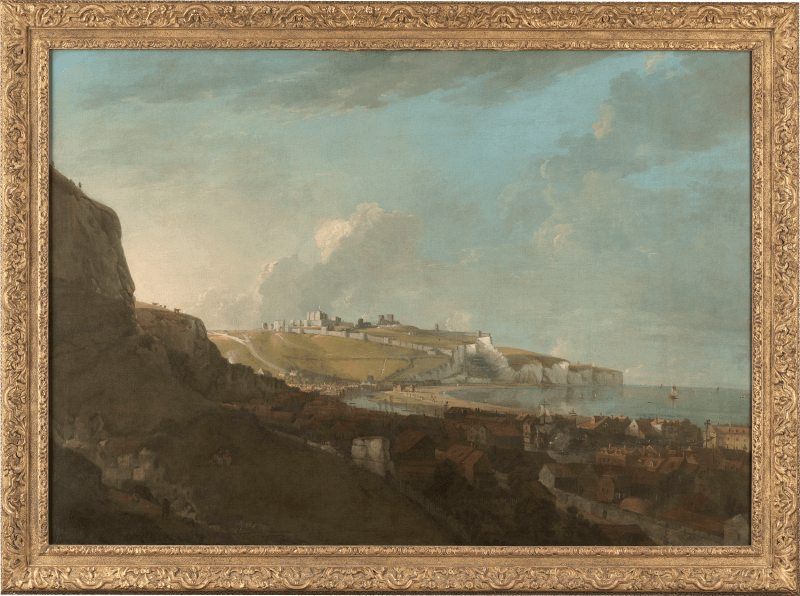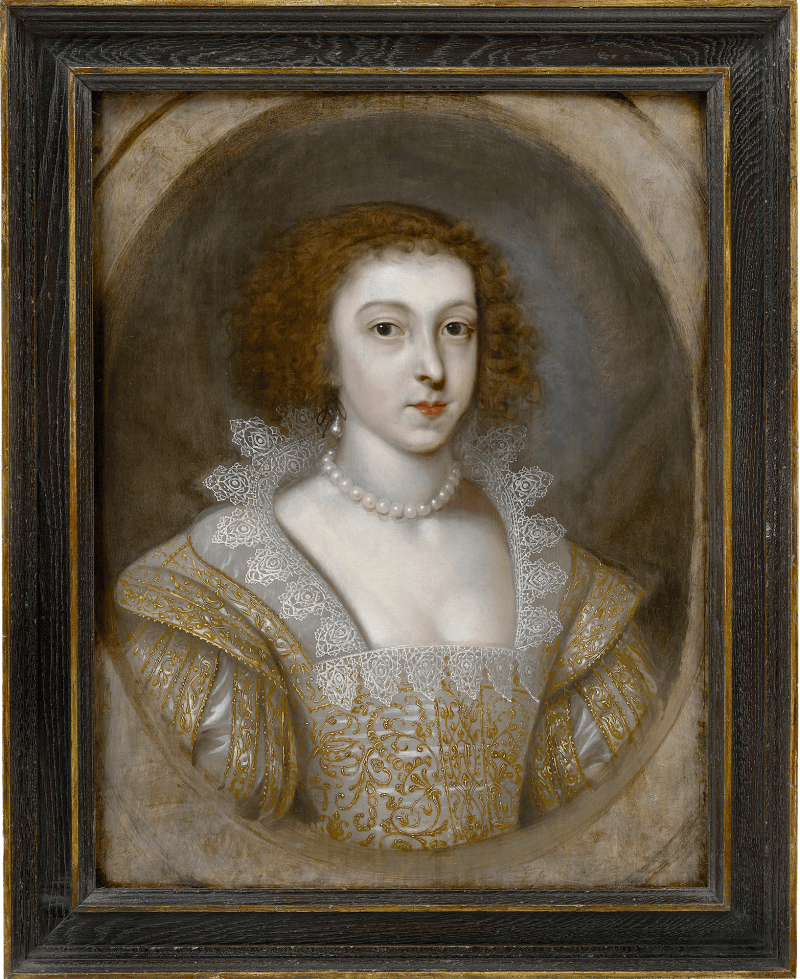This poignant portrait by Robert Home is one of the most accomplished works by the artist to appear on the market in recent years. The sitter is the artist’s son, William James Home, and belongs to a group of family portraits by Home painted in Calcutta between 1798 and 1808.[4] Its near-pristine state of preservation reveals his remarkable talent and suggests that a reassessment of his life and work in India is long overdue.
William was the third son of Robert Home and his wife Susanne Delane and was born on 29 August 1786 in Dublin.[5] By the time of his son’s birth, Home had travelled in Italy and set up a studio in London before trying to make his fortune as a portrait painter in Dublin. His business was profitable until the arrival of the famous portraitist Gilbert Stuart in 1788.[6] With fewer commissions, and after his wife’s death, Home left his children in the care of his sister-in-law...
This poignant portrait by Robert Home is one of the most accomplished works by the artist to appear on the market in recent years. The sitter is the artist’s son, William James Home, and belongs to a group of family portraits by Home painted in Calcutta between 1798 and 1808.[4] Its near-pristine state of preservation reveals his remarkable talent and suggests that a reassessment of his life and work in India is long overdue.
William was the third son of Robert Home and his wife Susanne Delane and was born on 29 August 1786 in Dublin.[5] By the time of his son’s birth, Home had travelled in Italy and set up a studio in London before trying to make his fortune as a portrait painter in Dublin. His business was profitable until the arrival of the famous portraitist Gilbert Stuart in 1788.[6] With fewer commissions, and after his wife’s death, Home left his children in the care of his sister-in-law and returned briefly to London before moving to India in 1791. Home spent his first three years in India as ‘Artist Correspondent to the Forces’ with Lord Cornwallis’s army in his campaign against Tipu Sultan, the ‘Tiger of Mysore’. The connections he made during this early period informed his decision to bring his four sons to India where they could make their fortunes in the service of the East India Company.
In a romanticised family memoir written in 1920, his great-granddaughter, Ella B. Day, recalled that in 1795, after Home relocated to Calcutta, he arranged for his boys to move to Glasgow to receive training to become officers in the Company’s Military service in India. The boys eventually received East India Company military cadetships, from which they progressed to commissions in two of the Company’s armies. Robert and William James were nominated to cadetships in the Company’s Madras Army, whilst John and Richard to cadetships in the Bengal Army.
The sitter in the present portrait, William James, rose rapidly in the Madras Army. He became a cadet in 1802, was commissioned as an ensign on 17th April 1803, promoted to lieutenant on 24th November 1803, and appointed lieutenant in the 17th Madras Native Infantry (MNI) on 9th May 1804.[7] He had joined the army at the start of the Second Mahratta War (1803-05) under the command of Richard Wellesley, the First Marquess Wellesley (older brother of the future Duke of Wellington). In June 1803, General Wellesley assumed control of all military and political affairs of the British Government in the territories under the Nizam of Hyderabad, the Peshwas and the Mahratta chiefs.[8] In the same year Home painted a successful portrait of the general, which no doubt further strengthened ties between his family and the army.[9]
It is not clear to which battalion of the 17th regiment William James belonged, but both 1st and 2nd battalions were stationed in present-day Andhra Pradesh, in a strategic position between Madras, the Bay of Bengal and Hyderabad.[10] From here troops could protect the Britain’s ally, the Nizam, whose dominions were under attack from bandits.[11] Being a lieutenant of the 17th MNI meant commanding a small platoon of about thirty soldiers, mainly sepoys (Indian soldiers recruited locally but equipped in European fashion). Each battalion of sepoys was directed by eleven European lieutenants, and William James was one of them.[12] In the present portrait, he is shown wearing the typical coatee of the British infantry subaltern, which was adopted by the MNI, and the facing colours – ‘deep yellow’[13] – of his regiment. His rank is denoted by the presence of a gold epaulette on his right shoulder.[14]
This portrait was painted in August 1804, probably during a small break in Calcutta with his family, and reflects his father’s pride and affection.[15]As Ella B. Day emphasizes, William James was ‘Home’s handsome and accomplished young son’.[16] He is also depicted with a set of primary colours, a leather watercolour sketchbook, and three long porcupine quills. These are an interesting addition to the portrait, disclosing an obscure exoticism in the Anglo-Indian portrait. Such quills were taken from Indian crested porcupines, the largest rodents of the Subcontinent, who lived in forests, rocky terrains and open countryside. They were collected by William James during expeditions with the army.[17] They also hint at his status as an amateur travelling artist. Ella B. Day explains: ‘William James was an easier subject to paint, for his heart was in his father’s work.’[18] Despite his penchant for painting, we cannot be sure if any of his artworks have survived.[19]
Sadly, William James was either ‘killed in action or died of wounds’ on 8th December 1809.[20] The army papers do not clarify where he fell. Ella B. Day was sure he perished ‘from the effects of a wound received in a foray with rebel natives near Patna’.[21] However, this ancient city on the Ganges in Bihar was not part of the Madras Presidency and it is unlikely the 17th MNI saw action there. Moreover, his grave was later found in a different part of the Subcontinent, in the outskirts of Aurangabad (present-day Chhatrapati Sambhaji Nagar), with the following inscription: ‘To the Memory of Lieut W. Home, late 17th Regt. Madras N.I., 1809’.[22] This location might suggest his place of death because Aurangabad was one of the army’s camps in the fight against the Mahrattas.[23]
[4] For instance, this portrait of a boy in uniform can be identified as Portrait of Robert Home jr. (1784-1842) by Robert Home (1752-1834): https://www.davidduggleby.com/auctions/2191/TheAutumnArtSale/82328/
[5] The couple had five children: Robert (1784-1842); Anne (1785-1829); William James (1786-1809); John (1787-1860); and Richard (1789-1862).
[6] British Library, Mss Photo Eur 331: Ella B. Day (1920) Without Permit being the Biography of Robert Home (Cabin Boy to Court Artist), (unpublished typewritten biography), pp. 125-28.
[7] List of Members of the Madras Military Fund, L-AG-23-10-1 (available on FindMyPast.co.uk); The East India Register and Directory for 1810, p. 404. (available on Ancestry.co.uk).
[8] Lieut. Col. W.J. Wilson (1883) History of the Madras Army. Madras: E. Keys at the Govt. Press, p. 63.
[10] Wilson, p. 230.
[11] Wilson, pp.123-24.
[12] Reid, pp. 10 and 17.
[13] Stuart Reid (2009) Armies of the East India Company 1750-1850. Oxford: Osprey Publishing, p. 21. Please compare to the following portrait of a Colonel of the 17th M.N.I.: https://www.christies.com/en/lot/lot-4959542
[14] Our thanks to Stephen Wood for helping identify the sitter’s regiment.
[15] Heinz Archives, Robert Home’s Register of Sitters.
[16] Day, p. 216.
[17] ‘William James often occupied his spare moments with pencil and paints, a trait somewhat discouraged by the authorities as not being of practical use’. Day, p. 196.
[18] Day, p. 214.
[19] Ella B. Day writes: ‘A word about William, Home’s artist son, may aptly come in here for he has left a record of himself in paint and design in the house of a resident in Calcutta. Douglas Dewar writes in his book called “Bygone Days in India” of a punkah hanging in a Calcutta house bearing on its flat board “a very tasteful and pleasing design of a group of cupids fans in hand, dispensing the favours of Aeolus on all of mortal kind who place themselves beneath its reviving influence. The work is signed Wm. Home”. We fall to wondering what fair maiden William was courting in the house of that Calcutta resident while he painted his “pleasing design” (Day, pp. 215-16). However, this romanticised paragraph seems inaccurate and not applicable to William James. Compare Dewar’s Bygone Days in India (pp. 107-8), where there is a reference to a Calcutta-based artist called ‘Mr Wm. Horne’, to Grant’s An Anglo-Indian Domestic Sketch (p. 21), both available on Archive.org.
[20] List of Members of the Madras Military Fund, L-AG-23-10-1 (available on FindMyPast.co.uk); The East India Register and Directory, 1810 (available on Ancestry.co.uk).
[21] Day, p. 216.
[22] https://bacsa.ourarchives.online/bin/aps_detail.php?id=537808
[23] Wilson, p. 63.
